30 Foods That Can Help Lose Weight (Evidence-Based)
Exercising regularly is good for losing fat and getting in shape, but if you want to notice true weight loss results, your diet matters most.
Shedding pounds isn’t about starving yourself; it is about taking the smart approach in selecting the right foods that will satisfy you without the extra calories.
If you have decided to revamp your diet and start losing weight, these 30 weight loss foods will definitely be great for a clean start.
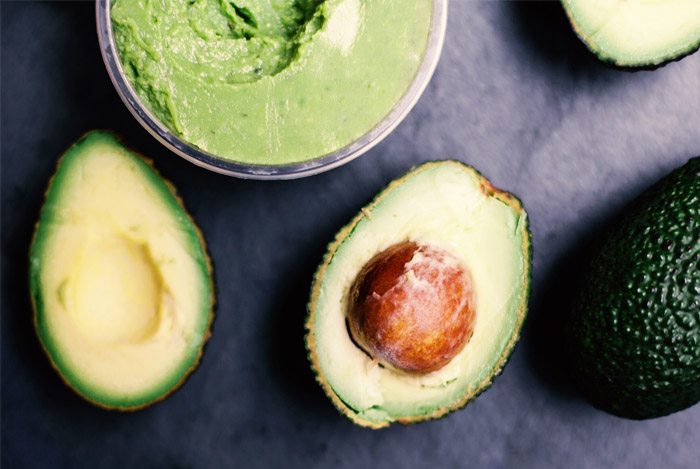
Avocado
A survey published by Nutrition Journal has revealed that consuming half of a medium-sized avocado daily can improve overall diet quality and lower the risk of developing metabolic syndrome by 50%.
Avocado eaters also reported lower body mass index (BMI) and slimmer waist circumference (1).
Eating guacamole could be the gateway to a healthier, leaner body.
In another study published by Nutrition Journal, participants who ate half of a fresh avocado during lunch reported a 40% reduction in their appetite.
With only 60 calories, having 2 tablespoons of guacamole can give you the same satiety benefit with more flavor (2).
Although avocados are quite a high-calorie food (100 grams of fresh fruit contain 160 calories), over two-thirds of these calories come from monounsaturated oleic acid.
Monounsaturated fats such as oleic acid are used up by the body as a slow-burning energy source, unlike saturated fat.
Avocado is also known as a rich source of Omega-9 fatty acids.
This fat compound has been shown to help reduce bad cholesterol (low density lipoprotein) while raising the good cholesterol.
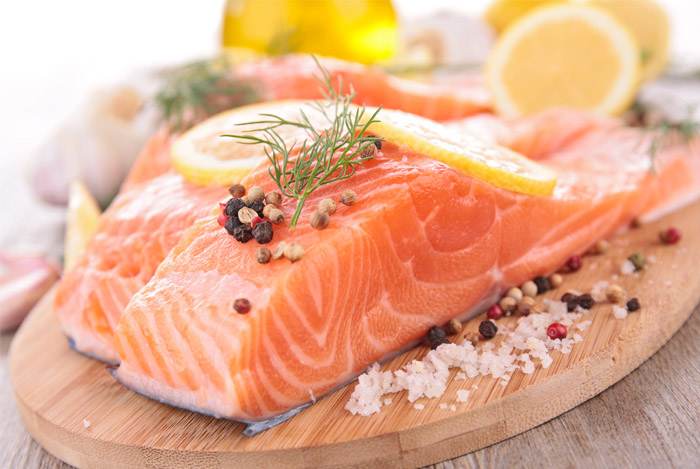
Salmon & Tuna
Both tuna and salmon are great foods for weight loss thanks to their high protein content.
Aside from providing amino acids to support muscle development, they also bolster metabolism.
Protein is difficult to digest and has a high thermic effect.
This means that your body burns more calories when digesting protein than it does when digesting fats and carbohydrates.
A study published by the American Journal of Clinical Nutrition has found that people who increased their protein intake by up to 30% felt more full and satisfied.
They also saw a decrease in their body weight due to losing fat (3).
Aside from protein, another benefit of salmon and tuna is their high content of Omega-3 fatty acids.
Omega-3 fatty acids are commonly found in fatty fish.
The acids have been found to lower the risk of obesity and improve your insulin response (4).
They can also stimulate the production of leptin – a hormone that helps your body’s metabolism and regulates food intake.
Both tuna and salmon are low in glycemic index and have a GI rating of 0.
They are also low in fat and calories, making them an ideal food choice for people struggling with obesity.
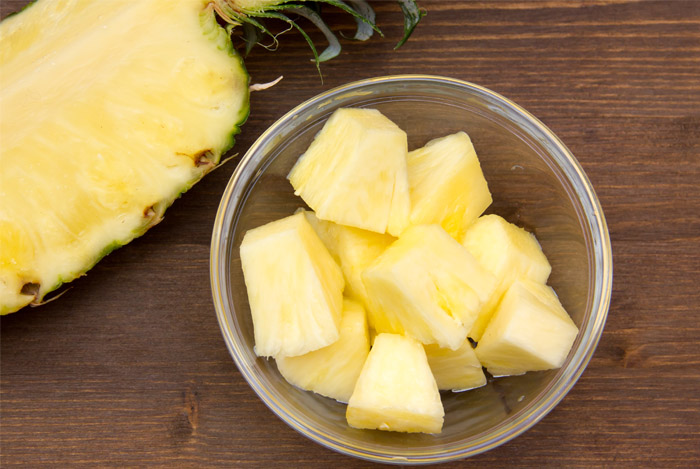
Pineapple
Pineapple is an ideal addition to your weight loss diet.
Not only is it low in calories, this refreshing fruit is also very filling.
Pineapple is rich in insoluble fiber – the type of fiber that doesn’t dissolve in water and adds bulk to your digestion, helping food pass through your digestive tract.
While it does not directly help in weight loss, it will help your body feel fuller, a beneficial effect for people trying to lose weight.
Pineapple is considered a “low-energy density” food because it contains very few calories, considering its weight.
The reason for this is that pineapple consists of 86% water, which can increase satiety just like a few calories would.
Aside from increasing satiety, eating pineapple also helps prevent dehydration.
One distinct compound only found in pineapple is bromelain.
Some people refer to it as a pineapple extract.
Bromelain is believed to reduce inflammation and support digestion.
One common cause of weight gain is inflammation and most people are not aware of this.
Chronic excessive inflammation can lead to weight gain because it negatively affects the action of leptin, the hormone responsible for weight control (5).
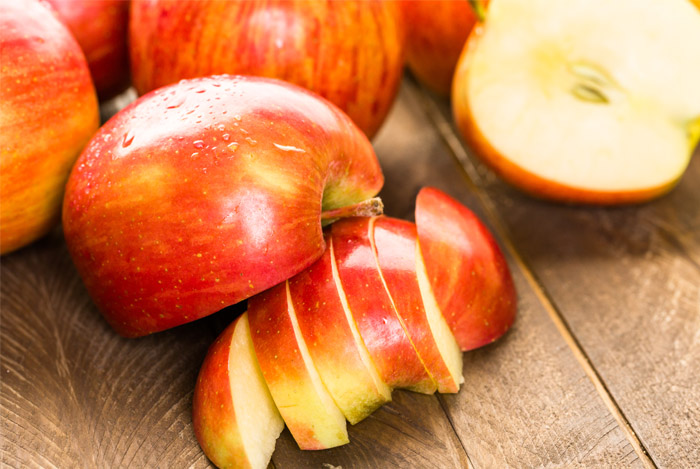
Apple
A medium-sized apple contains 4 grams of soluble fiber and 95 calories, making this sweet snack filling as well.
Apple is also a good source of Vitamin C, providing 14% of the daily recommended value.
Apple can satisfy hunger with a very little amount of calories, so it is not surprising that it can be a great part of a healthy weight loss diet.
Apple can lower the risk of diabetes.
A study in Finland involving 10,000 people found a reduced risk of diabetes mellitus type 2 associated with consumption of apple.
Intake of quercetin, a significant component of apple peels, has been linked to reduce the risk of type 2 diabetes (6).
In Brazil, apple and pear intake has been found to promote weight loss among middle-aged overweight women.
About 400 non-smoking hypercholestemic women were randomly given apples, pears, or oat cookies.
Each subject had to consume one of the three items three times a day for 12 weeks.
Those who consumed oat cookies didn’t have a significant weight loss while those who took fruits had a significant weight loss of 1.21 kg after 12 weeks (7).
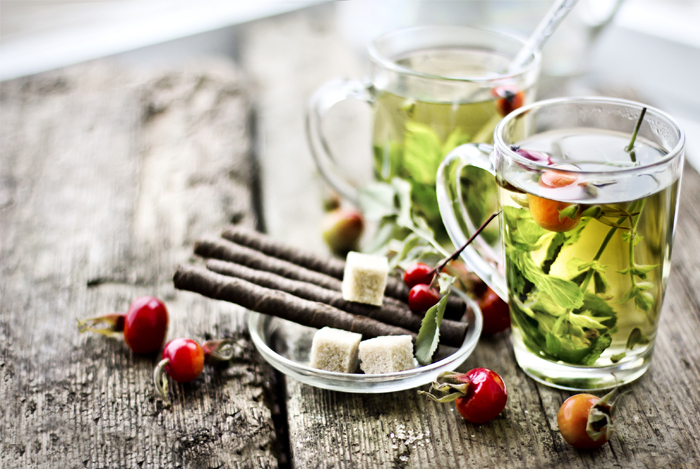
Green Tea
A cup of hot green tea offers a huge amount of nutrients with powerful effects.
One popular nutrient is caffeine.
You may think caffeine is bad, but it is a natural stimulant known to promote fat burning and improve physical performance.
A cup of green tea has much less caffeine content (up to 40mg) compared to coffee (up to 200mg), but still offers a mild effect (8, 9).
Another reason why green tea is good for people attempting to lose weight is its massive amount of different antioxidants, particularly the catechins.
The notable antioxidant is the EGCG (Epigallocatechin gallate), a substance that can bolster metabolism (10).
But how can EGCG in green tea promote weight loss?
It is believed that green tea can help move fat from fat cells.
In order to burn fat, it should first be broken down on the cellular level and moved into the bloodstream.
The antioxidant EGCG helps inhibit the enzyme that helps break down Norepinephrine.
When this enzyme is blocked, the level of the hormone norepinephrine increases.
This specific hormone functions as a signal for the fat cells, sending a message to metabolize fat.
As such, the more norepinephrine, the stronger the signal being transmitted to the fat cells to break down more fats.
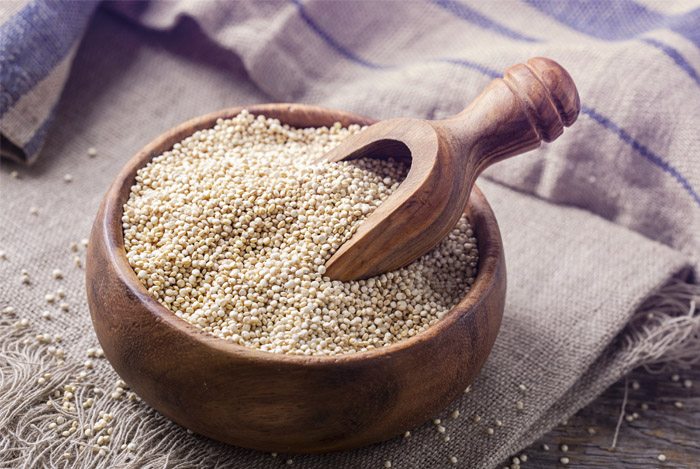
Quinoa
Quinoa possesses several fat-burning properties.
Apart from being high in protein, which can significantly reduce appetite and increase metabolism (11), it is also high in fiber, which can help increase the feeling of fullness.
Every serving of quinoa contributes 5 grams of fiber and 8 grams of high-quality protein.
The protein found in quinoa can help stabilize your blood sugar level.
On top of that, it has low glycemic index.
All of these properties contribute to improving health and promoting weight loss.
One notable evidence associating quinoa to weight loss is the study published in the Journal of Food Science and Technology.
In an animal study, it was found that the substance 20-hydroxyecdysone, a unique compound present in quinoa, can help you manage weight.
In the study, the rats fed with quinoa extract burned more calories and absorbed less fats.
It has been concluded that Quinoa has anti-obesity properties and can even be taken as a supplement to prevent obesity (12).
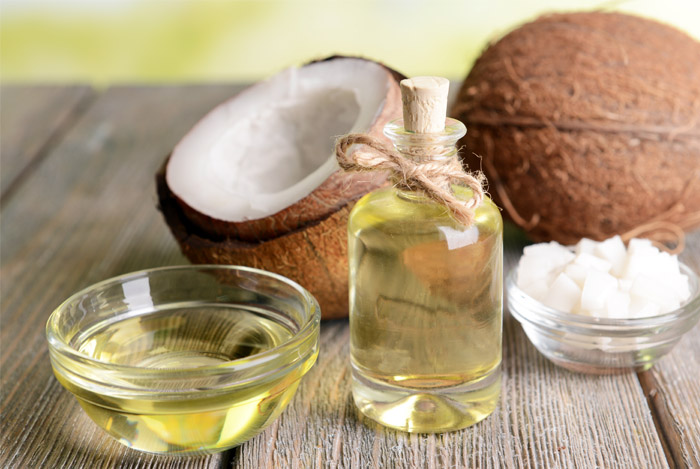
Coconut Oil
When it comes to dietary fat, one of the healthiest option is coconut oil.
While coconut oil is considered to be saturated fat, it is different from the others because its fat molecules belong to medium-chain fatty acid, a healthy type of saturated fat.
Many studies on medium-chain fatty acids reveal that they increase satiety, which leads to reduction in calorie intake (13).
This could be linked to the way different fats are broken down.
Whatever the action is, it works.
A study where participants were able to eat 256 less calories per day provided evidence that eating high amounts of medium-chain fats can cause an automatic reduction in calorie intake (14).
If coconut oil can effectively reduce calorie intake, then it can also help you lose belly fat in the long run.
In another study, medium-chain fats did not cause significant weight reduction, but they led to a big reduction in waist circumference (15).
The effect of coconut oil in terms of weight loss seems to be mild if you don’t consider belly fat.
This body part is also known as abdominal fat or visceral fat and it is the fat that can stick around your vital organs and cause diabetes, inflammation, and heart disease.
Reducing abdominal fat will lead to positive effects on your overall health and longevity as well as helping reduce the risk of chronic disease.
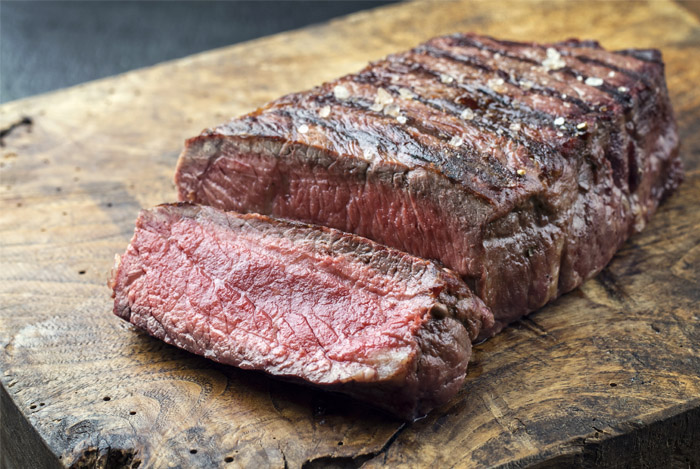
Lean Meat
Based on the standards of United States Department of Agriculture, the term “lean” is any serving of meat that contains less than 4.5 grams of saturated fat, 10 grams of total fat, and 95 milligrams of cholesterol (16).
Although skinless turkey and chicken breasts are often thought to be the healthiest bets when it comes to meat, red meat can still be healthy, but only if eaten in moderation.
Lean meat is one of the best sources of protein.
Searching for lean meat on the market isn’t hard; there are about 20 cuts of beef which can be considered as “lean”.
One of the benefits of consuming lean meat is its positive effects on your lipid profile.
A study on the Beef in an Optimal Lean Diet (BOLD) found that this type of dietary pattern elicits positive effects on the cardiovascular disease risk factors – lipid and lipoprotein levels.
The study showed a decrease in the total cholesterol and LDL (bad cholesterol) concentration in subjects after taking part in BOLD (17).
Lean meat offers pure protein that is necessary for people who enjoy a high level of physical activity.
Eating more lean meat is advised because it offers the ideal type of protein required.
Exercising makes your body consume proteins to build and repair damaged muscles.
Because meat is a muscle protein, it has the perfect combo of amino acids needed when engaging in more difficult physical exercises.
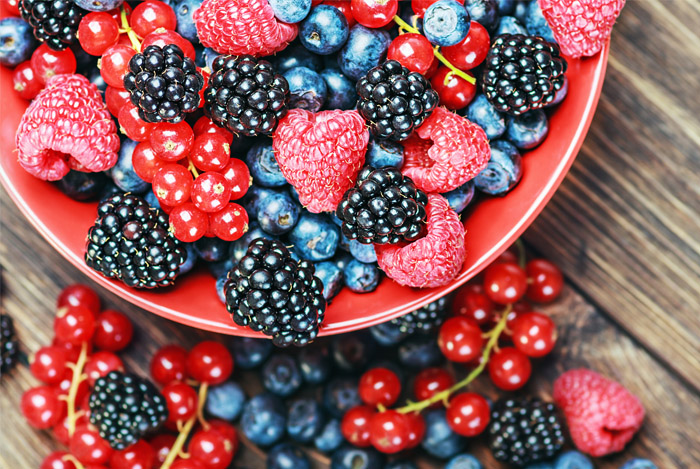
Berries
They may be small, but blackberries, boysenberries, blueberries, and cranberries are huge on antioxidants.
One of the most powerful antioxidants found in berries is called anthocyanin.
Anthocyanins give berries their vibrant hue.
There are numerous studies that prove how anthocyanin helps prevent obesity.
In one of them, the anthocyanin-rich fruit juices of blueberry and mulberry inhibited weight gain, reduced insulin resistance, and lowered cholesterol levels among rats fed with HFD (high fat diet) (18).
Apart from the antioxidants, berries are considered “juicy fruits”, meaning they mostly contain water.
Fruits with high water content are great for losing weight because they fill you up fast while driving down caloric intake.
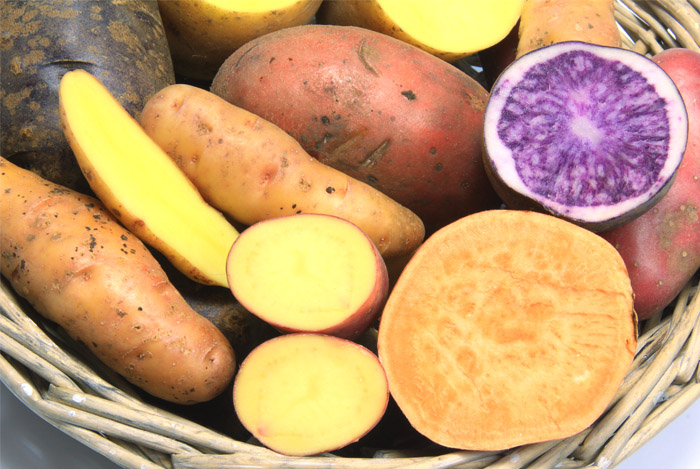
Sweet Potato
Though the benefits of sweet potatoes are known to many, most people are not aware that it can also aid in weight loss.
Sweet potatoes are rich in dietary fiber and water and have a very low calorie content.
If you are trying to lose weight, taking plenty of fiber is necessary because it keeps you full for hours, preventing you from binge eating.
It also takes longer to digest, preventing overeating and weight gain (19).
Although they are relatively sweet, sweet potatoes are low in calories.
A single serving of sweet potatoes contains about 90 to 100 calories.
In order to reduce caloric intake, replace high-calorie snacks such as cakes and sweet treats with sweet potatoes.
Sweet potatoes contain plenty of carbohydrates in the form of starch, but the best part about them is their high carotenoid content.
Carotenoids may help maintain blood sugar levels and reduce insulin resistance.
Sweet potatoes contain a unique phytonutrient called adiponectin – the hormone responsible for regulating blood sugar levels (20).
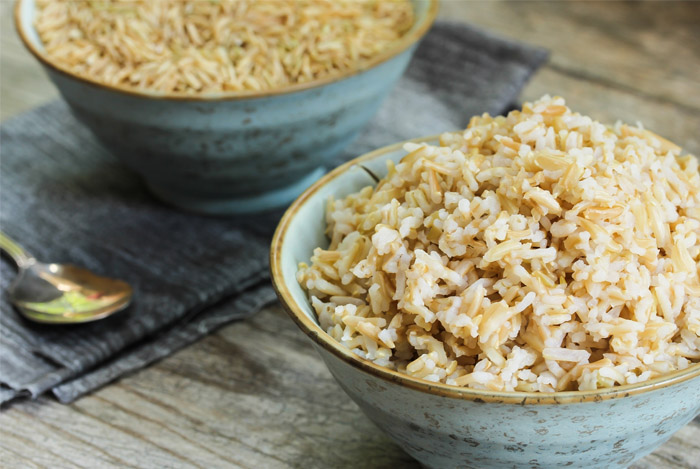
Brown Rice
The difference between white rice and brown rice isn’t just the color.
A grain of rice is comprised of different layers.
In the case of brown rice, only the outermost part – the hull – is removed to produce the brown rice.
This process retains most of the nutritional value of the rice, especially the aleurone layer – the layer with the most health-supportive nutrients and essential fats.
If brown rice is further milled and polished to remove the bran, the result will be a whiter rice that will miss important nutrients.
One benefit of brown rice is that it promotes good digestion.
A cup of brown rice contains 3.5 grams of fiber, which is 14% of the daily recommended amount.
One of the benefits of brown rice is that it helps to stabilize blood sugar level by slowly releasing sugar.
During research of overweight Asian Indians, it was revealed that consumption of brown rice can help reduce a 24-hour glucose and fasting insulin response (21).
The benefits of brown rice are not limited only to your diet; it is very good for your overall health.
Brown rice is rich in manganese, selenium, copper, magnesium, phosphorus, and niacin.
In the US, polished white rice would need to be fortified with iron and Vitamins B1 and B3 in order to get close to its brown counterpart in terms of nutrients.
Brown rice is filling, but not fattening. It is versatile and can be combined with many kinds of viand because of its unique flavour.
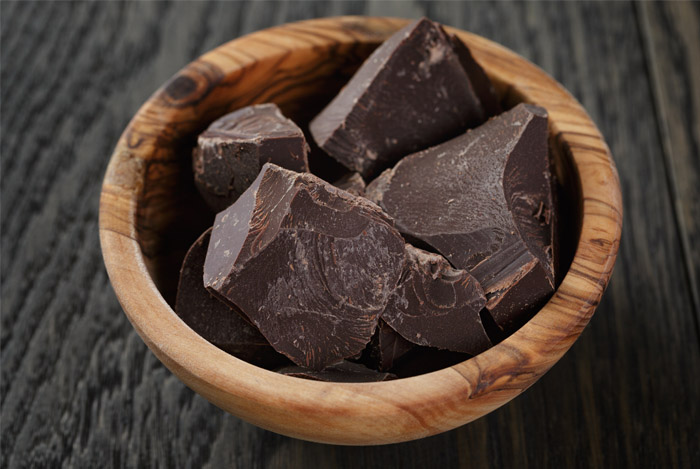
Dark Chocolate
There is no magic pill to losing weight, but several researches support the benefits of dark chocolate for weight loss.
It is also known to increase satiety, as well as reducing insulin resistance stress levels.
Reducing food cravings can help prevent overeating.
One way to reduce food cravings is by eating foods that can increase feelings of fullness.
A study in Denmark revealed that dark chocolate can increase satiety and lower the desire to eat something sweet.
This study compared dark chocolate to milk chocolate when it comes to their effects on appetite and energy intake.
The results show the positive effects of dark chocolate (22).
A study published in American Journal of Clinical Nutrition shows that replacing dark chocolate for other sweet foods may help reduce insulin resistance.
The study involved 15 healthy individuals who were given white or dark chocolate for 15 days.
After 15 days, those who ate dark chocolate showed a remarkable increase in insulin sensitivity, lower insulin resistance, and lower blood pressure than the white chocolate group (23).
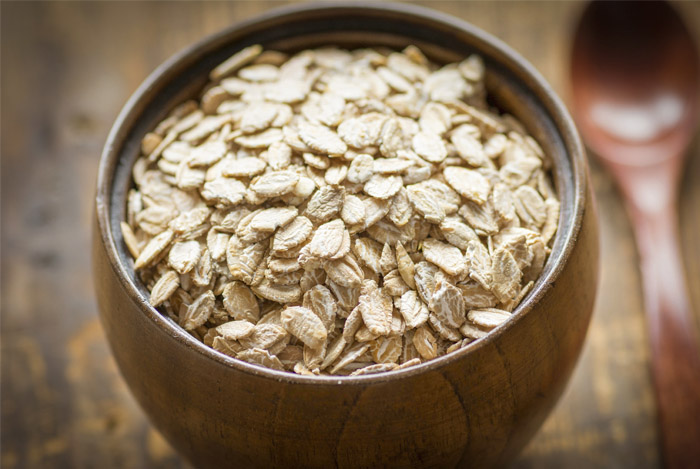
Oats
An oatmeal has been a breakfast staple for most people and it is heavily advertised as a cholesterol-lowering, heart-healthy food.
Several studies have shown the benefits of oat consumption in reducing abdominal fat and preventing weight gain.
A study has shown that oats are a grain rich in beta-glucan.
This nutrient has hepatoprotective and metabolic-regulating effects that can reduce obesity as well as improving liver functions and lipid profiles (24).
When eating oats, stick to plain, unflavored versions.
Packaged flavored oatmeal usually comes with sugar, providing you with more calories without any nutritional value.
Instead of using flavored oats, top your bowl with healthy fruits that can boost your weight loss efforts.
Add a handful of berries for more fiber in your diet.
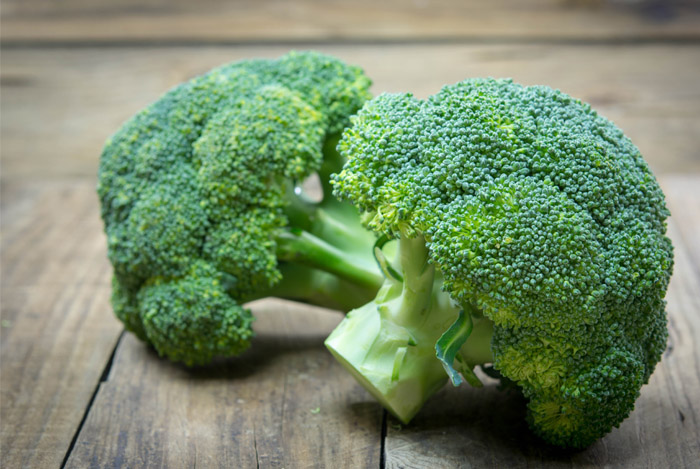
Broccoli
Broccoli has already been considered as a valuable food in terms of promoting life longevity and health since it was first cultivated in the Northern Mediterranean in about 6th century BC.
Like other cruciferous veggies, broccoli stands out when it comes to preventing cancer.
The American Cancer Society advises eating broccoli and other cancer-killing vegetables to obtain the best protection.
Consuming broccoli enhances the body’s ability to combat cancer in different ways including regulating enzymes, providing antioxidants, and controlling cell cycles and apoptosis (25, 26).
A cup serving of raw broccoli only contains 30 calories, while the cooked version has 54.
This amount can provide 100% of your daily Vitamins C and K recommended intake.
It is also a rich source of Vitamins A and B6, folate, and potassium.
Broccoli is a low energy density food, which means it contains more water and less calories.
It is composed of 90% water; a cup serving of cooked broccoli contains 5 grams of fiber.
Fiber has the qualities that can help you shed weight. As it absorbs water, it expands, making you feel full and slowing down digestion.
This makes it easier for you to eat less.
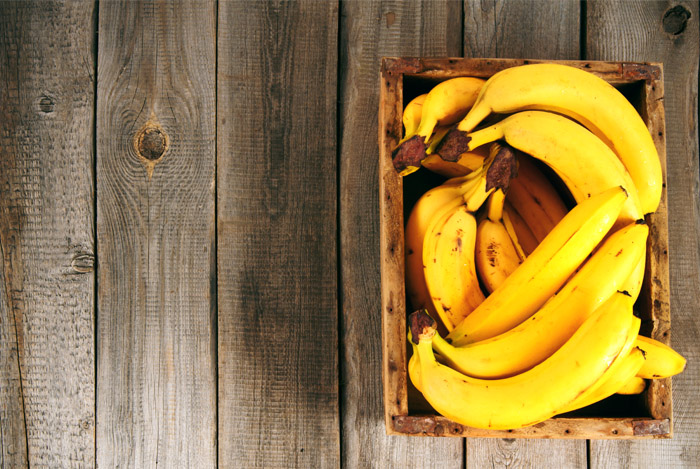
Banana
A medium-sized banana contains 105 calories, 3 grams of fiber, 27 grams of carbohydrates and only 14 grams of natural sugar.
Before it ripens, bananas are high in resistant starch, which is different from the normal carbohydrate starch.
This type of starch resists the digestion process.
Instead, it feeds healthy gut bacteria and suppresses appetite, leading to a more effective fat oxidation.
In one study, overweight/obese women were given one of four pancake test meals: waxy maize starch (WMS), waxy maize starch with whey protein (WMS + WP), resistant starch (RS), and resistant starch with whey protein (RS + WP).
The results showed that the combined consumption of resistant starch and whey protein increased fat oxidation and improved the feeling of fullness or satiety (27).
Because under-riped bananas are a little bitter, it is best to add them into smoothies together with other fruit to mask this taste.
Bananas are rich in glucose – the natural, easy-to-digest sugar that provides optimal energy.
Banana can be a quick snack if you need to replenish your body’s energy storage.
Another reason for eating banana for weight loss is its rich potassium content.
Potassium is an electrolyte that can ward off post-workout dizziness and muscle cramps.
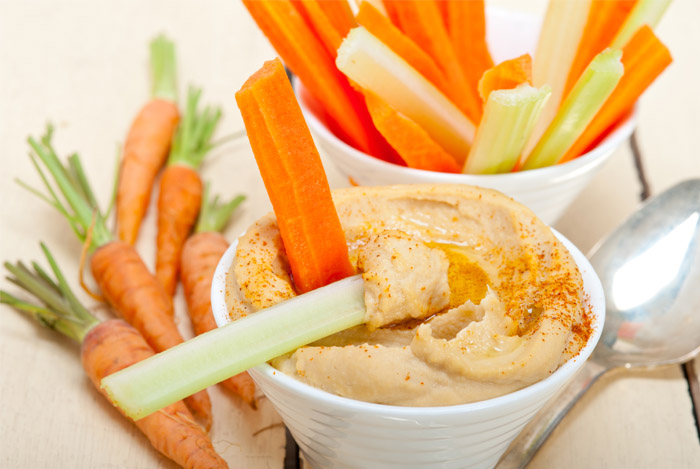
Hummus
Hummus is a creamy, thick paste made from mashed chickpeas and other healthy ingredients.
Hummus is rich in fiber and resistant starch, both associated with weight loss (28).
Hummus, when consumed in moderation, can be a superfood for those who want to lose weight.
According to a research published in the Journal of Nutrition & Food Sciences, people who consume hummus have 51% less chance to have high blood sugar and 53% less chance of becoming obese.
Also, hummus eaters’ waists are 2 inches smaller, on average (29).
Every 100 grams of hummus contain 4 grams of protein.
If it is added to a hard-boiled egg minus the yolk, hummus doubles its protein content.
By eating hummus, you take in 13% healthy polyunsaturated fats, 52% fiber and 20% less sugar.
Having hummus as a part of your diet can help you with your weight issues and keep you in top shape.
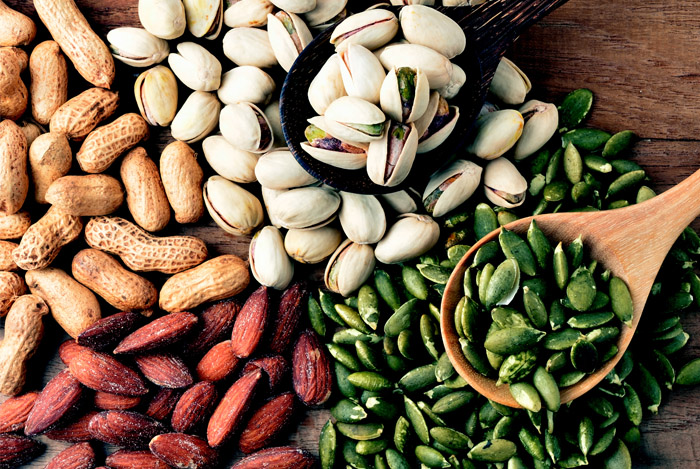
Nuts
Ounce for ounce, walnuts, pecans, and cashews are packed with more calories than any other food in this list.
Most of the foods listed here are watery and fiber-rich because we all know that they are a dieter’s best friend.
So why do most nutrition expert consider nuts, which are loaded with 160 to 200 calories per ounce, a weight loss food?
Richard Mattes, a well-known nutrition scientist of the Almond Board of California, explained why nuts, despite being one of the most energy-dense foods, can help with weight loss management (30).
According to Dr. Mattes, nuts are high in protein and fiber; these two nutrients are highly satiating.
They are also rich in unsaturated fats, which also have a satiety value.
Furthermore, nuts are crunchy and the process of chewing produces a satiety signal.
Snacking on nuts lets you eat less food later in the day.
Such reduction in food consumption makes up for the calories in nuts.
On top of that, nuts are highly resistant to digestion due to their tough cell walls.

Chia Seeds
Chia seeds are member of the mint family and a prized plant since the time of ancient Mayans and Aztecs.
The tiny seeds have been eaten for their energy-boosting effect; in fact, the word “chia” means strength in ancient Mayan.
Today, more and more dieters use chia seeds as a functional weight loss food item.
It is a quick and easy-to-prepare source of healthy fats, dietary fiber, protein, vitamins, minerals and antioxidants (31).
It also boasts a high concentration of plant-based Omega-3 fatty acid ALA (alpha-linoleic acid).
A couple of tablespoons of chia seeds contain 10 grams of fiber, which is beneficial for people who want to promote digestive health and lose weight.
When added to water, the seeds’ fiber compounds expand by up to 10-12 times, turning into a gel-like substance.
This causes an appetite-reducing effect as the seeds expand inside your stomach (32).
Aside from fiber and Omega-3, chia seeds are very high in various minerals.
Two tablespoons of chia seeds contain 18% of the daily suggested value for calcium, 24% of magnesium, 50% of manganese and 35% of phosphorus.
These minerals are vital for bone health, prevent hypertension, provide energy metabolism, and maintain healthy weight.
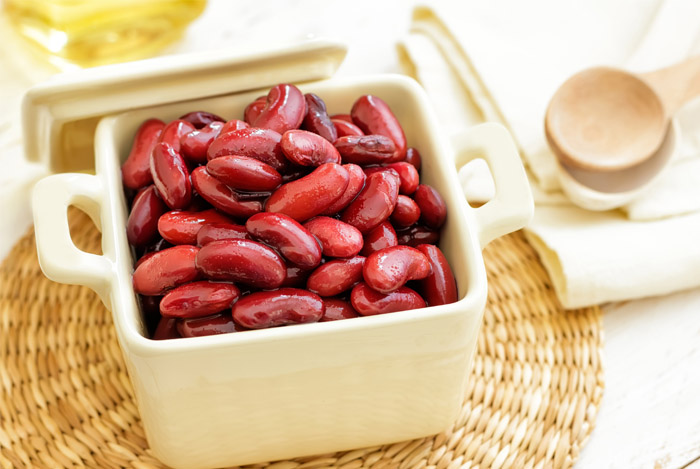
Beans & Lentils
Beans and lentils are high in dietary fiber and complex carbohydrates and are low in calories, sodium, and fats.
They provide a modest amount of fatty acids, primarily Omega-6.
They are an excellent source of protein, making them an ideal protein source for vegetarians who don’t have other protein sources.
Beans and lentils are comprised of different categories: common beans (e.g. black, navy, pinto, kidney), soybeans, dried peas, and chickpeas (garbanzo beans).
Beans and lentils are especially rich in dietary fibers, which are effective for losing weight, as well as soluble fibers and resistant starch.
Both soluble fibers and resistant starch have several things in common.
They both resist digestion and only pass through the stomach and small intestine, adding bulk to your digestion.
Once they reach the colon, they feed the good bacteria there (33).
Bloating and gas are often the side effects of beans and lentils.
The good thing is that these foods lead to the production of short-chain fatty acids like butyrate, which is believed to reduce the risk of colon cancer and improve overall colon health (34, 35).
Soluble fibers and resistant starch are highly satiating and may reduce appetite, which, in the long run, can lead to shedding weight (36, 37).
In addition, they are also effective in improving insulin sensitivity and regulating blood sugar levels.
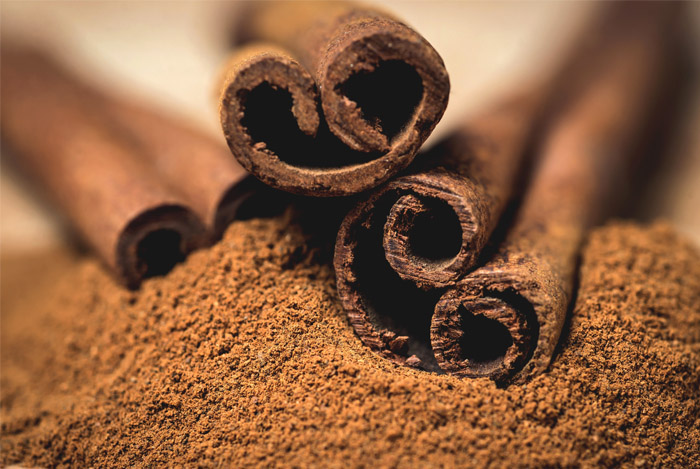
Cinnamon
Cinnamon is an aromatic spice, highly prized for its medicinal benefits for thousands of years.
Cinnamon won’t directly melt your excess fats, but it can be used to prevent more fats from being deposited to your body.
Cinnamon has been found to have regulatory effects on the body’s sugar levels by mimicking the action of insulin in the body.
Such “insulin-like” activity increases glucose’s metabolism by a 20-fold (38, 39).
When there is excess sugar in your blood, the liver will convert it into fatty acids.
Cinnamon works by increasing the metabolism of blood sugar and transforms it into energy.
This activity allows you to eventually lose weight.
Because sugar metabolism increases, you’ll feel higher levels of energy, alertness, and concentration.
When you feel more energized, you are in a better mood to lead a more active lifestyle.
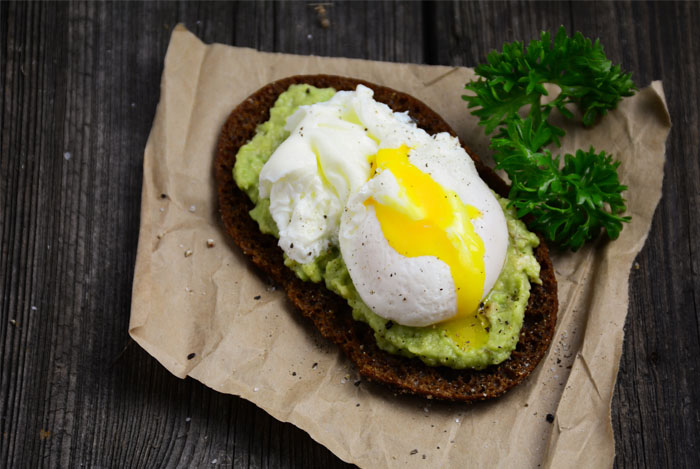
Eggs
Whole eggs are considered as one of the best weight loss foods that should be present in your diet.
They are rich in healthy fats, quality protein, and other essential nutrients.
They also have several unique properties, making them an exceptional weight loss-friendly food.
A large-sized egg contains only 78 calories and egg yolks are highly nutritious.
Keep in mind that if you fry your eggs, you are adding 50 calories per teaspoon of oil or butter.
Eggs are tested and proven to be effective when it comes to weight loss.
A 2008 study found that overweight/obese subjects shed more pounds and had a higher reduction in their abdominal circumference when they ate two eggs instead of a bagel for breakfast.
It’s worth to take note that the two variables contain the same amount of calories (40).
Moreover, eggs are packed with protein.
One egg contains 6 grams of protein, so eating two eggs puts you on the right track of staying full and bolstering your metabolism.
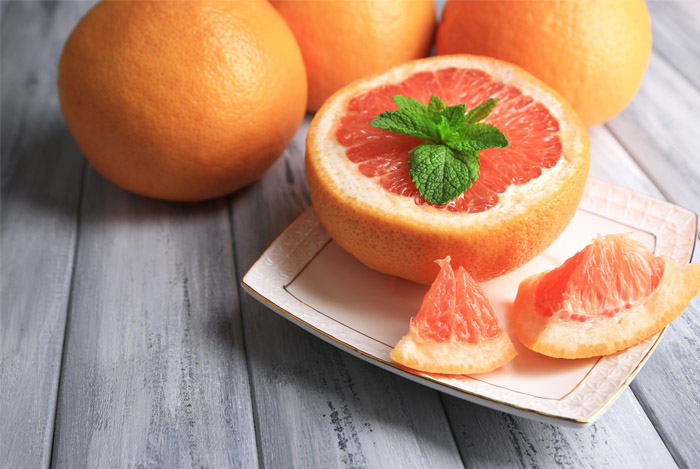
Grapefruit
Compared to other citrus fruits, grapefruit can be described as a sweet, tangy fruit that is loaded with health benefits and is versatile enough to be eaten for breakfast.
Many weight loss gurus consider grapefruit as a fat-burning food that can bolster your metabolism.
A rich source of Vitamins A and C, grapefruit is also high in potassium, magnesium, and dietary fiber that reduces the transit time in the digestive tract (41).
Grapefruit has been found to have positive effects on insulin resistance, metabolic syndrome, and body weight.
In a study that involved 91 obese patients, the participants were divided into four groups.
Each group consumed one of the following: placebo capsules and apple juice, grapefruit capsules and apple juice, grapefruit juice and placebo capsules, and half of a fresh grapefruit with a placebo capsule.
The result showed a significant weight loss in just 12 weeks for every group which had some presence of grapefruit, in comparison to the placebo group.
The patients under the fresh grapefruit group manifested improvement in insulin resistance and the most significant weight loss results (42).

Chicken Breast
Chicken breasts are low in calories, most of which come from protein.
A five-ounce serving of skinless chicken breast contains only 182 calories.
For every 200 calories, you’ll be getting only 2.5 grams of fat and 40 grams of protein (43).
This is the reason why chicken breast is always recommended when a fat loss diet is mentioned.
The amino acids present in chicken breast meat go straight to building and repairing muscle mass and other damaged tissues.
Apart from being protein-rich, chicken breast has a high satiety level, which means you will feel fuller for hours after eating it.
Unlike fat and carbohydrates, your body cannot digest protein very quickly.

Kale
A member of the cabbage family, kale is dubbed as the “king of greens” because of its healthy wallop of nutrients.
Kale is classified as a useful food for weight control due to its low amount of calories.
A 2.5-ounce serving of raw kale provides only 33 calories and is packed with important nutrients, making it one of the most nutrient-dense foods.
Such an amount of kale offers 3 grams of protein and 6 grams of fiber.
The plant possesses various minerals including copper, manganese, magnesium, calcium, and potassium.
It has high water content, which means kale is a low energy density food.
Eating lots of foods from this group is proven to help with losing weight (44, 45).

Tomatoes
There are lots of reasons why tomatoes can help you slim down and lose weight.
They are very low in calories, with a mere 22 in every medium-sized tomato.
They can easily fill you up, giving you plenty of healthy nutrients while keeping your daily calorie intake low.
Tomatoes are packed with fiber, which staves off cravings and prevents you from overeating.
One major weight loss compound found in tomatoes is lycopene.
It is a carotene and antioxidant found in red vegetables and fruits, predominantly tomatoes.
In a study of 30 females with a BMI of greater than 20, participants were given 280 ml of tomato juice for 8 weeks.
The results revealed that tomato juice supplementation significantly reduced body fat, body weight, BMI, waist circumference, and cholesterol levels (46).
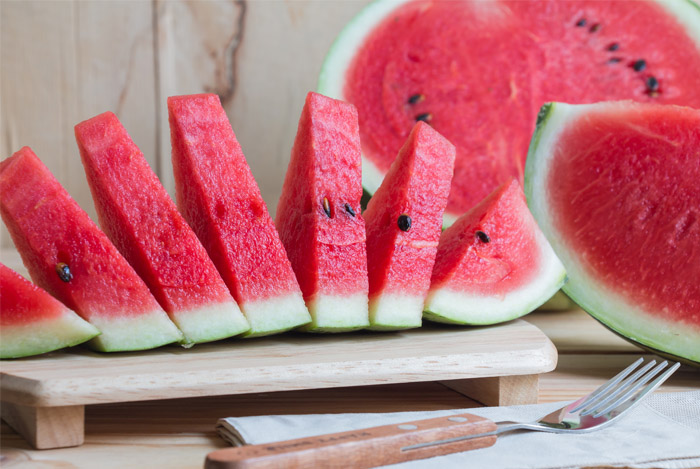
Watermelon
By far, the most significant weight loss benefit of watermelon is its low calorie content.
For every 100 grams, watermelon contains only 30 calories, which is very low in comparison to other fruits considered to be low in calories (47).
So if you are on a weight loss diet, you can enjoy 2 kilograms of watermelon without exceeding your 500-600 calorie limit.
Watermelon isn’t rich in fiber, but it does contain lots of water.
Its exceedingly high content of water is another weight loss benefit because proper hydration prevents your metabolism from slowing down.
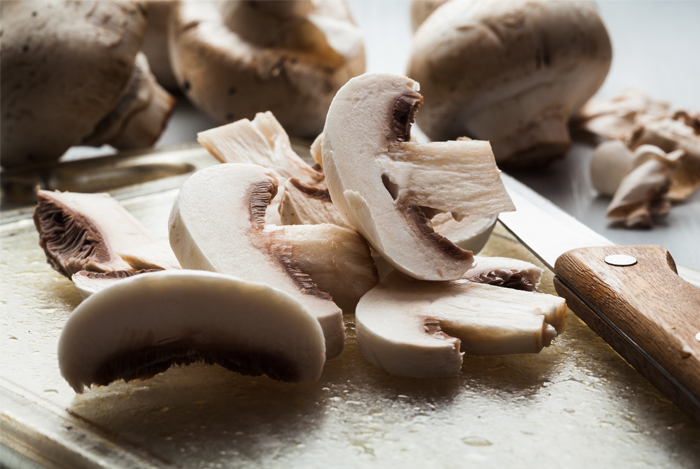
Mushrooms
What makes mushrooms a great addition to your diet is that they are very low in calories.
Mushrooms contain only 20 calories for every 100 grams, which means you can eat as much as you want without getting fat.
Mushrooms are a rich source of Vitamins B and D, phosphorus, and potassium.
Mushrooms have been a part of Chinese diet as a way to prevent obesity.
A one-year clinical trial comparing a standardized diet (meat diet) to a mushroom diet (mushrooms substituted for red meat) showcased a number of interesting finds.
Participants on the mushroom diet achieved a decrease in body mass index, waist circumference, and total body weight compared to their baseline.
This study proves that substituting mushrooms for red meat can be a useful strategy in achieving weight loss and improving general health (48).
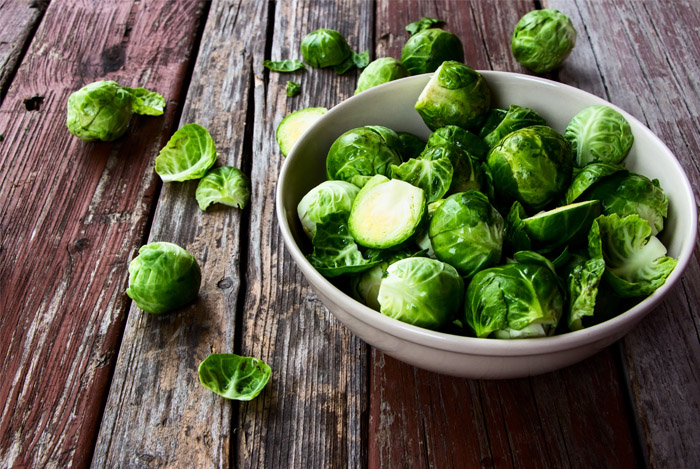
Sprouts
Sprouts are a highly nutritious food.
A sprout is produced from a germinating seed.
It can grow from the seeds of beans, buckwheat, grains, legumes, and vegetables.
Sprouts come in different types – some are hard (mung beans) or spicy (onion sprouts and radish), while others are soft and delicate.
Sprouts are believed to be a concentrated source of “life force” or living enzymes that are lost when cooked.
Because of their high enzyme content, they are easy to digest.
Furthermore, the living enzymes found in sprouts were found to have a weight loss effect.
In a study on the effects of the peanut sprout extract (PSE), overweight/obese subjects were divided into three groups – the placebo group, the low PSE group, and the high PSE group.
The results revealed that both PSE groups showed reduced waist circumference, with low LDL (bad cholesterol) results.
It was concluded that the peanut sprouts extract can fight abdominal obesity and improve overall health (49).
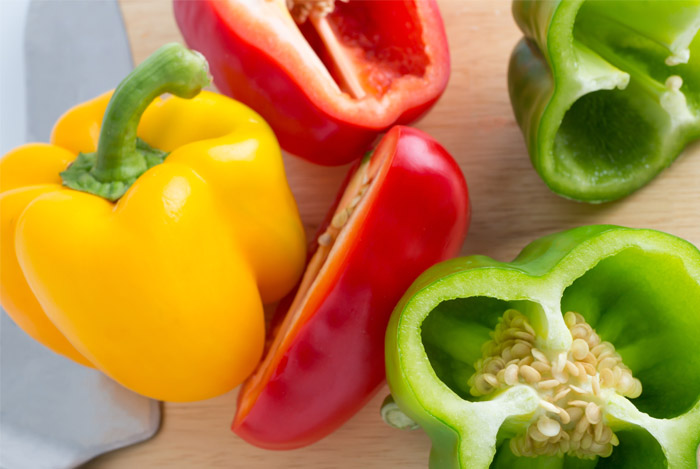
Peppers
The name “pepper” covers a diverse family of plants that ranges from the popular red or green bell pepper to the scorching hot habañero.
Peppers are a member of the genus “capsicum” and all peppers contain a unique compound called “capsaicinoid”.
It is present in most chili peppers, which gives them their spicy heat.
While adding spicy pepper to your meal isn’t a magic pill, it may help you burn extra calories and fat.
A study on the effects of capsaicin found that this compound has a significant inhibitory effect against the storage of fat (50).
Capsaicin has also been proven to prevent obesity-induced insulin resistance by suppressing inflammatory responses and enhancing the break-down of fats (51).
Aside from capsaicin, peppers are rich in antioxidants and flavonoids, as well as Vitamin C.
Peppers are very versatile in the kitchen and can be added to almost any dish.
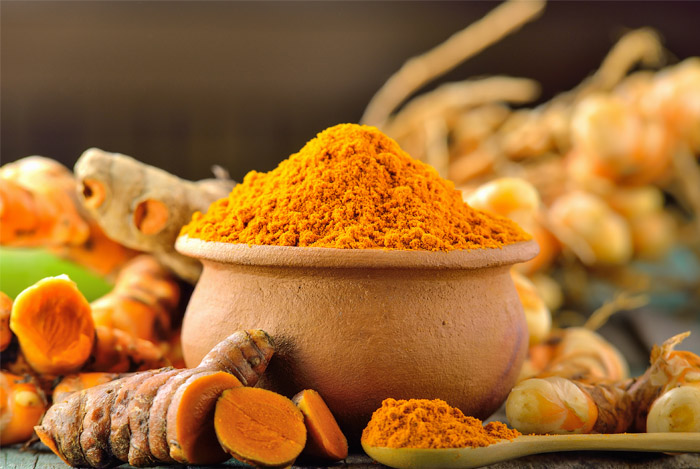
Turmeric
A study published in the Journal of Nutritional Biochemistry showed that curcumin, the active compound found in turmeric, may offer a unique solution for obese and overweight individuals by changing the composition of their fatty cells into a calorie-burning type (52).
For decades, numerous researches have been revealing that obesity, a major risk factor for diabetes, cancer, and heart diseases, is a pro-inflammatory disease.
Curcumin has been heavily studied for its antioxidant and powerful anti-inflammatory effect.
As a treatment for obesity, it has been found to directly interact with pancreatic cells and liver cells.
Most imprtantly, however, is its interaction with adipocytes (fat cells) – the cells specialized in storing energy as fats.
As a result, curcumin suppresses any inflammatory activity.
This action results in a reverse reaction in insulin resistance, high blood sugar, and high cholesterol level – all symptoms linked to obesity (53).
Conclusion
As you can see, there are many foods that can help you lose weight without breaking your bank.
All you have to do is watch your calorie intake and eat these common foods.
Do you know any other foods that can help with weight loss?
Share them in the comments!
FDA Compliance
The information on this website has not been evaluated by the Food & Drug Administration or any other medical body. We do not aim to diagnose, treat, cure or prevent any illness or disease. Information is shared for educational purposes only. You must consult your doctor before acting on any content on this website, especially if you are pregnant, nursing, taking medication, or have a medical condition.
HOW WOULD YOU RATE THIS ARTICLE?
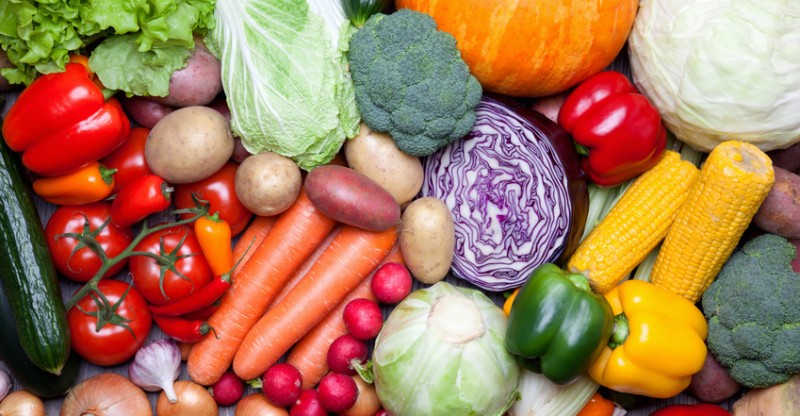


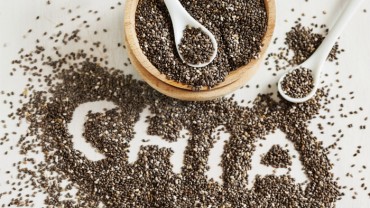



love watermelon..may just have to eat more to lose that weight
Hello Therese! Everything is good in moderation 🙂
It’s fantastic to think so many of these actually taste good!
Hi Sylvia! Yeah, it’s always pleasant to eat something tasty knowing it’s good for your health!
I often use berries in bakery, do I still receive the nutrients from them?
What can I cook hummus from except chickpeas? Will it be good for health without chickpeas?
I would like to try pineapple and chicken diet!!! Do you think its good idea? Should I try?
Hello Emily! I don’t think such diet will be good for you, you may lose weight but it can affect your health. It’s better to follow diets which include all nutrients and vitamins.
I love pickled mushrooms, are they healthy? I’ve always worried they are too salty…
Are pregnant and breastfeeding women allowed to eat mushrooms? I heard, though they are beneficial in general, they are not recommended during pregnancy and breastfeeding.
Thank you for this great article! I have questions about tuna: which way is it better to cook it? Is canned tuna still beneficial?
I enjoy juicing different fruits and berries a lot, but is berry juice beneficial as much as the whole berries?